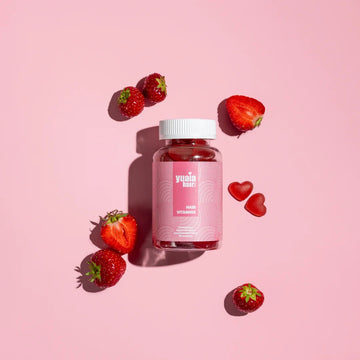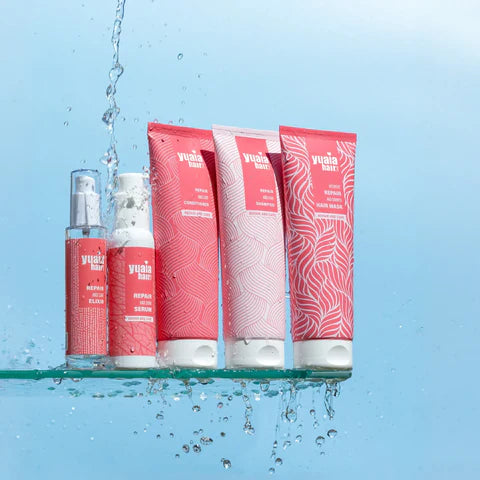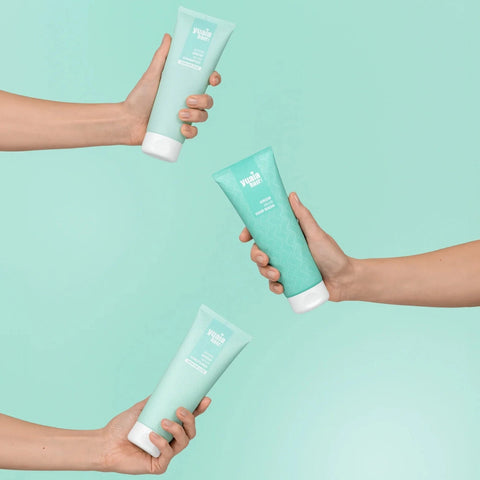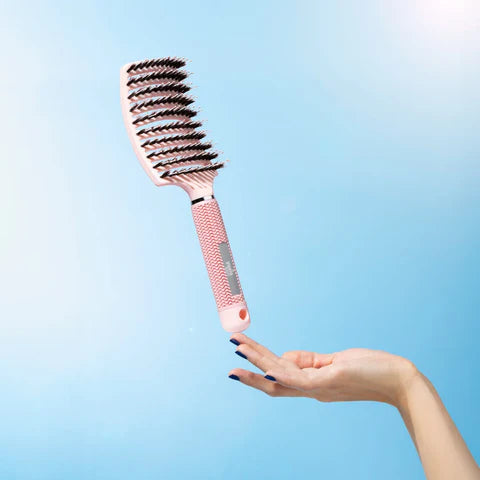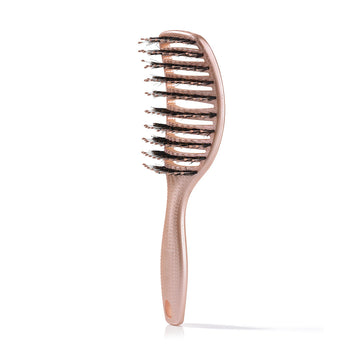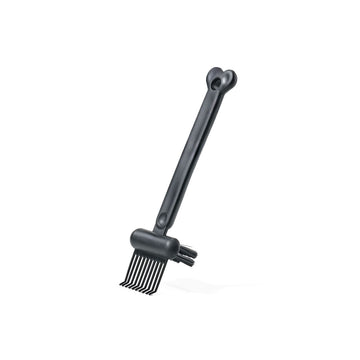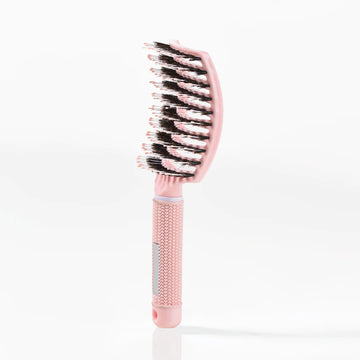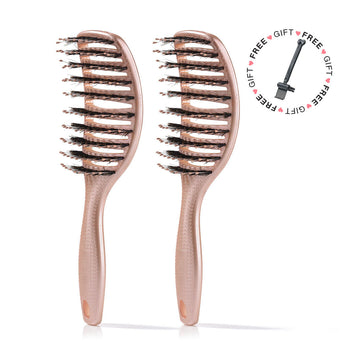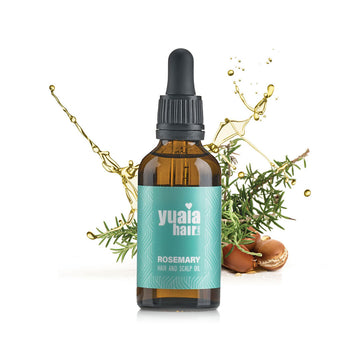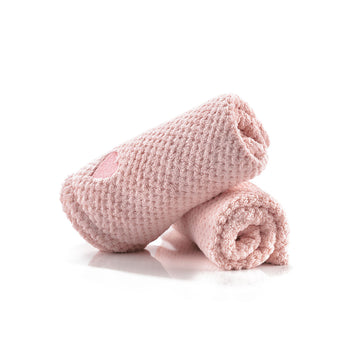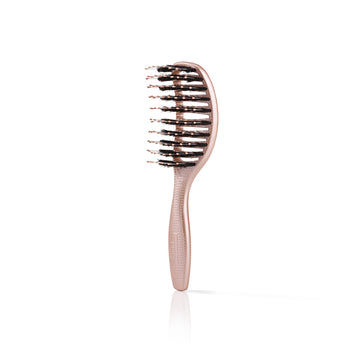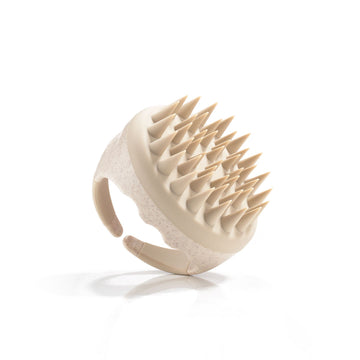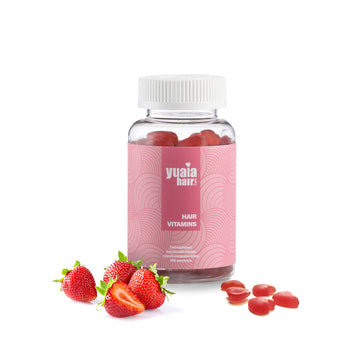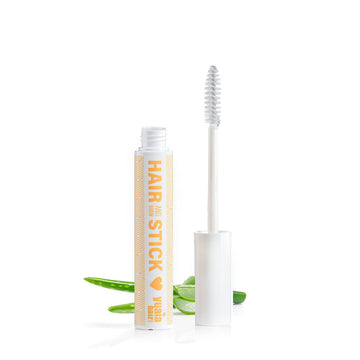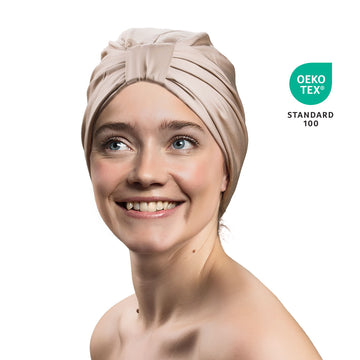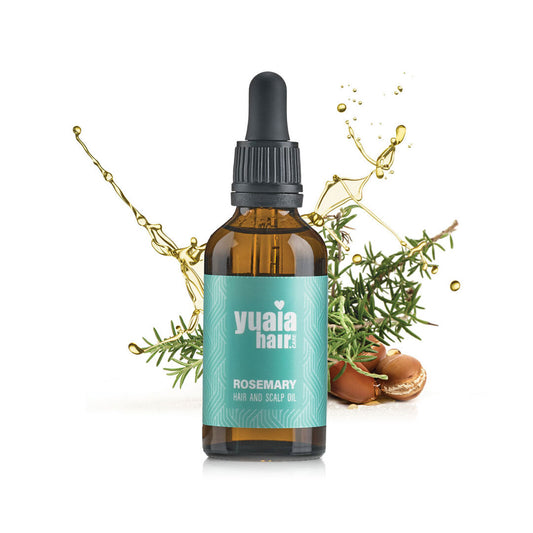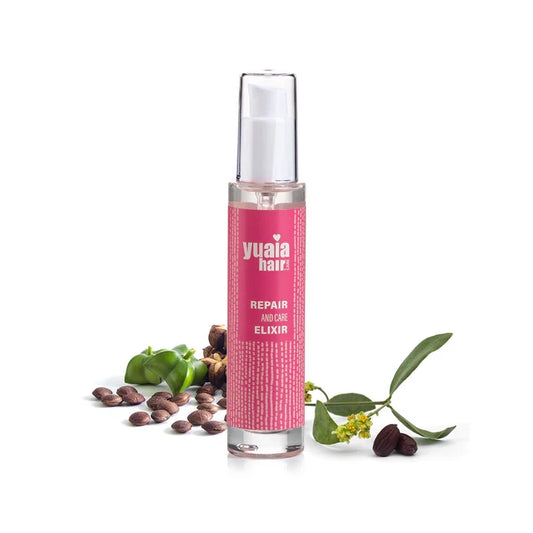
What are the benefits of using oil on fine hair?
When selected thoughtfully and applied correctly, hair oils can significantly enhance both the appearance and health of fine hair. These oils nourish not only the strands but also the scalp, addressing dryness and improving overall manageability. Lightweight oils are especially beneficial, as they absorb easily without leaving behind residue or heaviness.
Key benefits of using suitable oils on fine hair include:
-
Hydration and nourishment for both scalp and hair
-
Frizz control and reduction of static electricity
-
Enhanced shine without compromising natural volume
-
Strengthening of delicate strands, helping to prevent breakage
-
Protection against environmental stressors such as UV exposure and pollution
-
Support for scalp health through soothing and improved circulation
For fine hair types, the right oil can make a noticeable difference—adding softness, resilience, and natural vibrancy while supporting long-term hair health.
The best hair oils for fine hair
Choosing the right type of oil is essential when working with fine hair. Not all oils are created equal, and some are far better suited to delivering nourishment without weighing the hair down.

Below, we explore the most effective oils that provide lightweight hydration, shine, and strength specifically for fine hair types.
Argan oil
Often called "liquid gold," argan oil is rich in vitamin E and antioxidants, making it one of the most popular natural oils in hair care. It moisturizes and smooths hair while adding a natural shine and improving elasticity, which helps reduce breakage in fine hair. This oil also contains essential fatty acids that help repair damage and protect hair from environmental stressors such as sun exposure and pollution.
Its lightweight consistency makes it ideal for fine hair, as it doesn’t leave a greasy residue or weigh the hair down, allowing for daily use or regular treatments without compromising volume or texture.
Jojoba oil
Jojoba oil closely resembles the natural sebum produced by the scalp, making it an excellent choice for balancing oil production and maintaining optimal scalp conditions. It hydrates effectively without clogging hair follicles or leaving behind a greasy residue, making it ideal for those with sensitive or oily scalps. This lightweight oil is rich in vitamins B and E as well as minerals like zinc and copper, all of which contribute to maintaining normal hair.
Jojoba oil is also known to reduce dandruff and support the regeneration of hair follicles, promoting a healthy scalp environment that is important for fine hair growth and long-term hair health.
Grapeseed oil
Grapeseed oil is a lightweight, nutrient-rich oil that’s high in linoleic acid—a fatty acid known for strengthening hair fibers and restoring moisture balance. It’s especially beneficial for fine or brittle hair prone to breakage, as it enhances elasticity and nourishes without weighing the hair down.
The oil is also packed with antioxidants that protect against free radicals and environmental stressors such as UV rays and pollution. Additionally, it soothes the scalp and creates a healthy foundation for hair growth.
Thanks to its silky texture, grapeseed oil tames frizz and adds a natural shine while absorbing quickly and leaving no greasy residue. Because it doesn’t build up in the hair, it’s ideal for regular use—especially on fine or porous hair types that require gentle care and lightweight moisture.
Almond oil
Rich in fatty acids, magnesium, and vitamin E, almond oil nourishes and softens hair, making it a valuable addition to any fine hair care routine. Its emollient properties not only improve the texture of the hair but also enhance manageability and reduce dryness.
Almond oil helps reduce breakage by reinforcing the hair shaft, making fine hair more resilient to mechanical damage from brushing and styling. It also soothes the scalp, reducing irritation and flakiness, which can hinder healthy hair growth.
Thanks to its smooth texture and fast absorption, it delivers moisture without leaving a greasy finish, allowing fine hair to retain its natural bounce and shine.
Sunflower oil
Sunflower oil is a lightweight, fast-absorbing hydrator rich in essential fatty acids, particularly linoleic acid, which helps retain moisture and strengthen the hair barrier. Ideal for fine hair, it smooths strands, adds shine, and prevents dryness and split ends without weighing hair down.
Its emollient nature supports softness and manageability, while also offering natural protection against UV rays and environmental stress. Additionally, it soothes the scalp and promotes circulation, contributing to healthier growth conditions. Non-comedogenic and gentle, sunflower oil is well-suited for regular use, even on delicate hair types prone to buildup.
Tips for using oils on fine hair
To increase the benefits of the oils and minimize the risk of greasy hair, follow these application guidelines carefully. Proper technique ensures that oils nourish the hair without leaving it limp or overly saturated, especially when dealing with fine hair types. Below are some application tips to help use oils effectively:
-
Use only a few drops per session, typically 2-4 drops, adjusting based on hair length, thickness, and porosity. Less is often more for fine hair.
-
Focus application on mid-lengths and ends, where the hair is driest and most prone to breakage. Avoid the scalp unless you're specifically targeting a dry scalp or other scalp issues.
-
Warm the oil between your palms before applying. This improves spreadability and ensures an even, light coating.
-
Apply to damp or towel-dried hair for better absorption and to seal in moisture. Damp hair opens the cuticle slightly, allowing oils to penetrate more deeply.
-
If using oil as a styling aid or frizz control, apply a minimal amount to dry hair, concentrating on flyaways and dry ends.
-
Use 1-2 times per week as part of your regular routine, but adjust frequency based on seasonal changes, hair stress levels, or styling habits.
These guidelines ensure the oil works as a nourishing supplement to your routine, rather than creating build-up or disrupting your hair's natural volume.
DIY hair oil blends for fine hair
Creating custom oil blends can tailor the benefits to your hair's specific needs, allowing you to combine the unique properties of multiple oils for more targeted results. By experimenting with different ratios and supporting ingredients, you can fine-tune your oil treatments for hydration, scalp nourishment, or shine enhancement.
-
Nourishing blend: 1 part argan oil + 1 part almond oil. This combination delivers deep moisture and helps improve elasticity and softness, ideal for brittle or overly processed fine hair.
-
Scalp health blend: 1 part jojoba oil + 1 part grapeseed oil. Perfect for balancing sebum levels, calming scalp irritation, and promoting healthy hair growth in fine, sensitive scalps.
-
Hydrating shine blend: 1 part sunflower oil + 1 part argan oil. A great everyday blend for sealing in moisture while maintaining a lightweight, glossy finish.
To improve each blend, mix in a drop of essential oil such as lavender oil (for soothing effects), rosemary oil (for scalp stimulation), or peppermint oil (for a refreshing feel). Always mix in a small bowl and perform a patch test to avoid sensitivity. These DIY blends can be used weekly or bi-weekly depending on your hair’s condition and styling needs.
Choosing the right oils for fine hair
Choosing the right hair oils for fine hair can add strength, shine, and improved health without weighing it down. Fine hair needs lightweight nourishment and moisture without heavy products. The right oil can help make hair softer, more resilient, and protected from environmental stress and breakage. With regular use, oils also support healthy hair growth. Try different lightweight oils and blends to find what works best for your needs—whether your goal is added shine, reduced frizz, or improved texture.
Frequently Asked Questions
Can hair oils make fine hair look greasy or flat?
When used correctly and in small amounts, lightweight oils will not make fine hair greasy or flat. It's important to use only a few drops, focus on the mid-lengths and ends, and avoid the scalp unless treating dryness. Proper application ensures nourishment without sacrificing volume.
Which oils are best for fine hair that is prone to breakage?
Argan oil, grapeseed oil, and almond oil are excellent choices for fine hair prone to breakage. These oils are lightweight, rich in nutrients, and help strengthen hair fibers without weighing them down.
How often should I apply oil to fine hair?
For most fine hair types, applying oil 1-2 times per week is sufficient. Adjust frequency based on your hair's needs, seasonal changes, or if your hair is exposed to extra stress from styling or environmental factors.
Can I use hair oil on my scalp if I have fine hair?
Yes, but only if you have a dry or irritated scalp. Use lightweight oils like jojoba or grapeseed and apply sparingly. Avoid heavy oils and always wash thoroughly to prevent buildup.
Are DIY oil blends safe for fine hair?
DIY oil blends using lightweight oils such as argan, jojoba, grapeseed, almond, and sunflower are safe for fine hair when used in moderation. Always perform a patch test before full application to ensure there is no sensitivity.
 2-4 day UK delivery
2-4 day UK delivery
 25.000+ satisfied customers
25.000+ satisfied customers
 Satisfaction Guarantee
Satisfaction Guarantee

